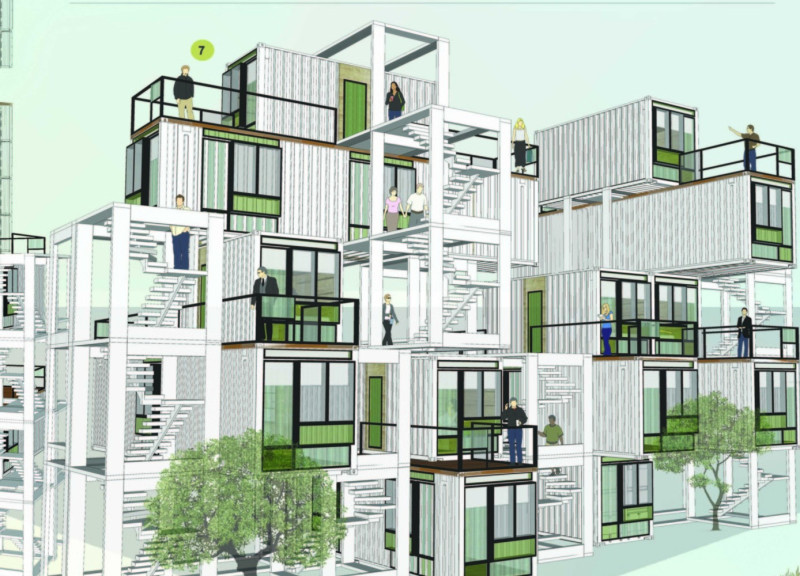5 key facts about this project
Crisis: Containable addresses the critical issue of affordable housing in Sydney, a city facing rising property prices and limited space. The design focuses on reusing high-cube shipping containers as residential units. This approach not only maximizes land use but also fosters connections within the community.
Design Strategy
Container living typologies are at the forefront of this design. They range from small units for individuals to larger spaces that cater to families. By using these adaptable living arrangements, the project meets the diverse needs of urban residents. Stacking the containers efficiently makes the most of available land, tackling the challenges of urban density.
Structural Innovations
Micro Gantries play a crucial role in this design. They provide access and support to the container structures. This system allows for effective weight distribution, which reduces stress on the containers themselves. The result is a flexible framework that enhances the living conditions while accommodating a variety of residential configurations.
Spatial Organization
The layout creates a careful balance between public and private spaces. This design concept encourages community interaction while respecting the need for personal privacy. Shared amenities invite social connections, while designated private areas allow for retreat. This balance reflects the complexities of modern urban life, where people seek both community and solitude.
Future Adaptability
Flexibility is an essential feature of the container units. They can be rearranged and modified to meet changing demands over time. This adaptability addresses the evolving needs of the population and ensures that the project remains relevant. The design promotes resilience in housing, responding to the shifts in living patterns.
The thoughtful use of color and texture on the container facades adds visual appeal. This enriches the urban environment, standing out against more traditional buildings while enhancing the overall streetscape.



























